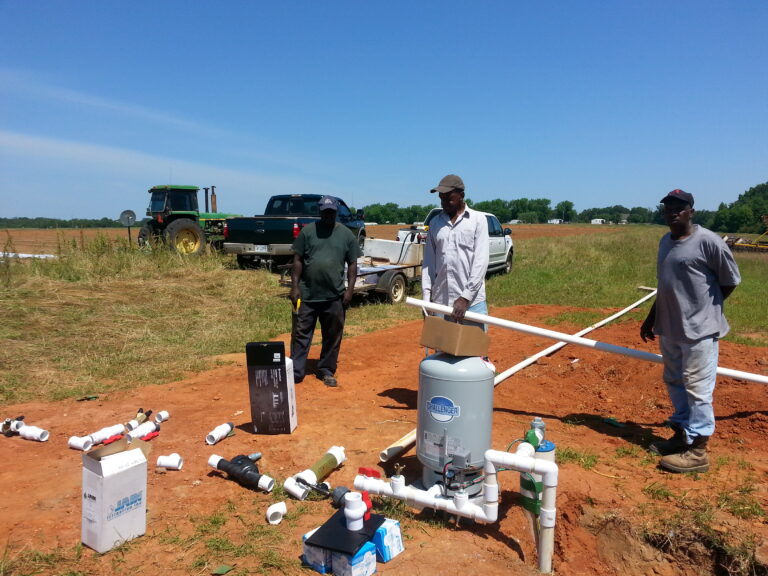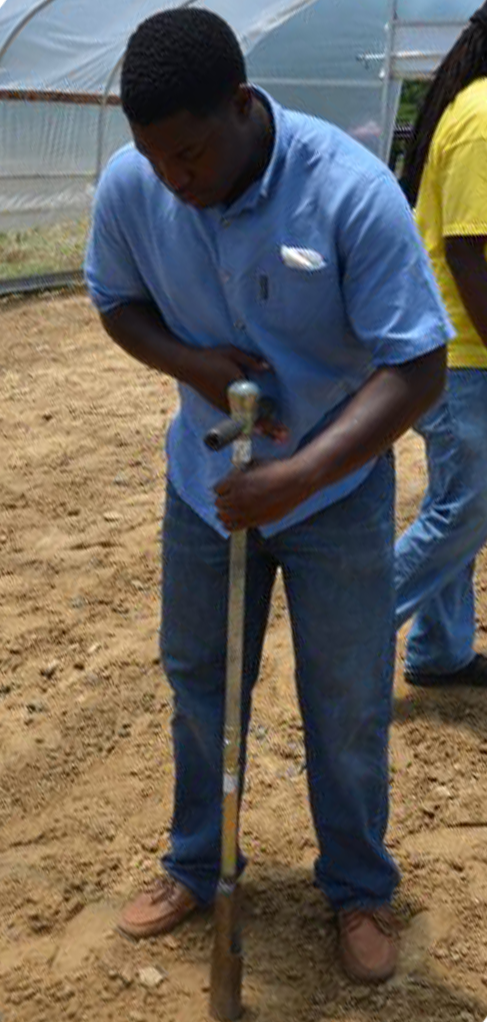
Raymon Shange

Raymon Shange
It’s a hot, summer day and you turn on your kitchen faucet to fill up a glass of ice cold water. For many Americans, we don’t think twice about the safety of drinking this water, nor where it comes from. We rarely think about the meticulous treatment or extensive research that goes into ensuring that our drinking water is clean or the individuals who have spent their lives working towards clean water for everyone.
Raymon Shange, Ph.D., is a professor in the Department of Agriculture and Environmental Sciences at Tuskegee University, AL. In addition to this role, Shange is the Director of the Carver Integrative Sustainability Center located on the university’s farm, the Associate Dean of the College of Agriculture, and much more. Over his career, he has worked in farming sustainability and policy issues that have impacted farmers in the rural South, along with other projects.
According to Shange, when human activity occurs like the cutting down of trees, there can be an increase in soil particles that end up in our surface-water. This will eventually contribute to the presence of bacteria and other pollutants as well. For humans, bacteria in water can cause conditions from diarrhea to salmonellosis. Animals who drink stagnant water can also suffer from multiple conditions like poisoning, muscle tremors, liver damage, which leads to death, according to a paper by Donald L. Pfost and Charles D. Fulhage of the Extension University of Missouri.
Microbial ecology is an important area of study when it comes to determining the healthiness of water. According to Shange, microbes “are studied to understand their contribution to the environment.” For instance, if the water that plants take in is contaminated by certain bacteria, that could negatively affect the plant’s lifespan, which then affects other living things who depend on those plants to survive.

Fascinated with something that is too little to see with the human eye, Shange took an interest in microbes and began to conduct more research on them. Though microbes are everywhere, he found that the zone around the root of the plant was where microbes thrived. When this occurs in nature, this is a great relationship for plants because microbes are a key source of nutrients, Shange said.
Across the state of Alabama, communities ideally get their water after three stages of treatment. Unfortunately, less affluent communities sometimes cannot afford a third stage of treatment.
“Primary treatment is the physical separation of water,” Shange said. This is where water is held and where heavy solids fall to the bottom of the cell. After this happens, water gets moved to the secondary stage, which involves chemical treatment. According to Shange, the reason that the second stage is so important is because pathogenic bacteria thrive in low oxygen levels. Adding oxygen and chlorine derivatives helps to kill those types of bacteria.
By starting that second stage, and introducing high levels of oxygen, the remaining bad bacteria die.
“Communities with money can afford both of these treatments in addition to a tertiary treatment that can remove less known but still harmful pollutants and poor communities can only afford the primary and secondary treatments,” said Shange. This means that less fortunate communities could have a higher chance of being introduced to contaminated water and are therefore more at risk of experience negative health outcomes.
“Bacteria in water has been a problem at times in the United States years ago,” said Shange. He further explained that as a solution, animals should not be allowed to graze around water sources. Avoiding heavy uses of inorganic fertilizer and other chemicals can prevent them from getting into the groundwater and surface water, and has also been a significant step forward.
Luckily for the state of Alabama, we seem to be doing well in terms of “good” or healthy water compared to other states. When I asked Shange about the state of Alabama and the state’s relationship with water, he stated that “[Alabama] has plenty of surface water and groundwater that is still untapped”.
To put into perspective how successful Alabama is at providing water to its citizens, the Alabama Department of Environmental Management (ADEM), reported that between 2020 and 2022, about 850 million gallons of water was retrieved daily and was eligible to drink by citizens.
While Alabama does seem to be doing a great job in water quality, there have been a few hiccups. PFAS are “…long lasting chemicals, components of which break down very slowly over time” according to the Environmental Protection Agency. Studies have found that exposure to these chemicals might be associated with some negative health outcomes in humans and animals.
In February 2023, the EPA announced it would be giving Alabama 52 million dollars to remove PFAS chemicals from sources of drinking water. These funds are intended to allow the proper tools to be used to strain out these harmful chemicals and restore the water to its utmost quality.
When more citizens become aware of the steps that go into purifying water and by being able to positively contribute to efforts themselves, water quality will increase nationwide. This is an issue that should not be regarded lightly, as water pertains to the lives of every being on the planet. Shange’s commitment to clean water is inspiring, and while nationwide clean water may be years away, taking a class or even taking the time to research the subject will be a great help.